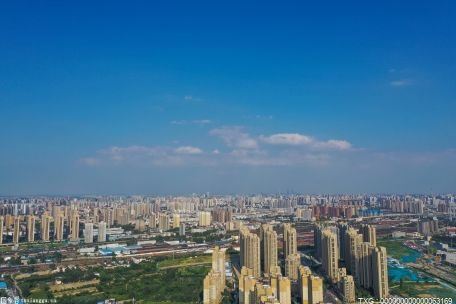每日动态!TF阅读真题第467篇Desert Formation
The deserts, which already occupy approximately a fourth of the Earth’s land surface, have in recent decades been increasing at an alarming pace. The expansion of desert-like conditions into areas where they did not previously exist is called desertification. It has been estimated that an additional one-fourth of the Earth’s land surface is threatened by this process.
Desertification is accomplished primarily through the loss of stabilizing natural vegetation and the subsequent accelerated erosion of the soil by wind and water. In some cases the loose soil is blown completely away, leaving a stony surface. In other cases, the finer particles may be removed, while the sand-sized particles are accumulated to form mobile hills or ridges of sand.
Even in the areas that retain a soil cover, the reduction of vegetation typically results in the loss of the soil’s ability to absorb substantial quantities of water. The impact of raindrops on the loose soil tends to transfer fine clay particles into the tiniest soil spaces, sealing them and producing a surface that allows very little water penetration. Water absorption is greatly reduced; consequently runoff is increased, resulting in accelerated erosion rates. The gradual drying of the soil caused by its diminished ability to absorb water results in the further loss of vegetation, so that a cycle of progressive surface deterioration is established.
 (资料图片)
(资料图片)
In some regions, the increase in desert areas is occurring largely as the result of a trend toward drier climatic conditions. Continued gradual global warming has produced an increase in aridity for some areas over the past few thousand years. The process may be accelerated in subsequent decades if global warming resulting from air pollution seriously increases.
There is little doubt, however, that desertification in most areas results primarily from human activities rather than natural processes. The semiarid lands bordering the deserts exist in a delicate ecological balance and are limited in their potential to adjust to increased environmental pressures. Expanding populations are subjecting the land to increasing pressures to provide them with food and fuel. In wet periods, the land may be able to respond to these stresses. During the dry periods that are common phenomena along the desert margins, though, the pressure on the land is often far in excess of its diminished capacity, and desertification results.
Four specific activities have been identified as major contributors to the desertification processes: overcultivation, overgrazing, firewood gathering, and overirrigation. The cultivation of crops has expanded into progressively drier regions as population densities have grown. These regions are especially likely to have periods of severe dryness, so that crop failures are common. Since the raising of most crops necessitates the prior removal of the natural vegetation, crop failures leave extensive tracts of land devoid of a plant cover and susceptible to wind and water erosion.
The raising of livestock is a major economic activity in semiarid lands, where grasses are generally the dominant type of natural vegetation. The consequences of an excessive number of livestock grazing in an area are the reduction of the vegetation cover and the trampling and pulverization of the soil. This is usually followed by the drying of the soil and accelerated erosion.
Firewood is the chief fuel used for cooking and heating in many countries. The increased pressures of expanding populations have led to the removal of woody plants so that many cities and towns are surrounded by large areas completely lacking in trees and shrubs. The increasing use of dried animal waste as a substitute fuel has also hurt the soil because this valuable soil conditioner and source of plant nutrients is no longer being returned to the land.
The final major human cause of desertification is soil salinization resulting from overirrigation. Excess water from irrigation sinks down into the water table. If no drainage system exists, the water table rises, bringing dissolved salts to the surface. The water evaporates and the salts are left behind, creating a white crustal layer that prevents air and water from reaching the underlying soil.
The extreme seriousness of desertification results from the vast areas of land and the tremendous numbers of people affected, as well as from the great difficulty of reversing or even slowing the process. Once the soil has been removed by erosion, only the passage of centuries or millennia will enable new soil to form. In areas where considerable soil still remains, though, a rigorously enforced program of land protection and cover-crop planting may make it possible to reverse the present deterioration of the surface.
【Paragraph 1】The deserts, which already occupy approximately a fourth of the Earth’s land surface, have in recent decades been increasing at an alarming pace. The expansion of desert-like conditions into areas where they did not previously exist is called desertification. It has been estimated that an additional one-fourth of the Earth’s land surface isthreatenedby this process.
1. The word“threatened”in the passage is closest in meaning to
○restricted
○endangered
○prevented
○rejected
【Paragraph 3】Even in the areas that retain a soil cover, the reduction of vegetation typically results in the loss of the soil’s ability to absorb substantial quantities of water. The impact of raindrops on the loose soil tends to transfer fine clay particles into the tiniest soil spaces, sealing them and producing a surface that allows very little water penetration. Water absorption is greatly reduced; consequently runoff is increased, resulting in accelerated erosion rates. The gradual drying of the soil caused by its diminished ability to absorb water results in the further loss of vegetation, so that a cycle of progressive surface deterioration is established.
2. According to paragraph 3, the loss of natural vegetation has which of the following consequences for soil?
○Increased stony content
○Reduced water absorption
○Increased numbers of spaces in the soil
○Reduced water runoff
【Paragraph 5】There is little doubt, however, that desertification in most areas results primarily from human activities rather than natural processes. The semiarid lands bordering the deserts exist in adelicateecological balance and are limited in their potential to adjust to increased environmental pressures. Expanding populations are subjecting the land to increasing pressures to provide them with food and fuel. In wet periods, the land may be able to respond to these stresses. During the dry periods that are common phenomena along the desert margins, though, the pressure on the land is often far in excess of its diminished capacity, and desertification results.
3. According to paragraph 5, in dry periods, border areas have difficulty
○adjusting to stresses created by settlement
○retaining their fertility after desertification
○providing water for irrigating crops
○attracting populations in search of food and fuel
【Paragraph 6】Four specific activities have been identified as major contributors to the desertification processes: overcultivation, overgrazing, firewood gathering, and overirrigation. The cultivation of crops has expanded intoprogressivelydrier regions as population densities have grown. These regions are especially likely to have periods of severe dryness, so that crop failures are common. Since the raising of most crops necessitates the prior removal of the natural vegetation, crop failures leave extensive tracts of landdevoid ofa plant cover and susceptible to wind and water erosion.
4. According to paragraph 6, which of the following is often associated with raising crops?
○Lack of proper irrigation techniques
○Failure to plant crops suited to the particular area
○Removal of the original vegetation
○Excessive use of dried animal waste
【Paragraph 9】The final major human cause of desertification is soil salinization resulting from overirrigation. Excess water from irrigation sinks down into the water table. If no drainage system exists, the water table rises, bringing dissolved salts to the surface. The water evaporates and the salts are left behind, creating a white crustal layer that prevents air and water from reaching the underlying soil.
5. According to paragraph 9, the ground’s absorption of excess water is a factor in desertification because it can
○interfere with the irrigation of land
○limit the evaporation of water
○require more absorption of air by the soil
○bring salts to the surface
6. All of the following are mentioned in the passage as contributing to desertification EXCEPT
○soil erosion
○global warming
○insufficient irrigation
○the raising of livestock
【Paragraph 10】The extreme seriousness of desertification results from the vast areas of land and the tremendous numbers of people affected, as well as from the great difficulty of reversing or even slowing the process.Once the soil has been removed by erosion, only the passage of centuries or millennia will enable new soil to form. In areas where considerable soil still remains, though, a rigorously enforced program of land protection and cover-crop planting may make it possible to reverse the present deterioration of the surface.
7. Which of the sentences below best expresses the essential information in thehighlighted sentencein the passage? Incorrect choices change the meaning in important ways or leave out essential information.
○Desertification is a significant problem because it is so hard to reverse and affect large areas of land and great numbers of people.
○Slowing down the process of desertification is difficult because of population growth that has spread over large areas of land.
○The spread of deserts is considered a very serious problem that can be solved only if large numbers of people in various countries are involved in the effort.
○Desertification is extremely hard to reverse unless the population is reduced in the vast areas affected.
8. It can be inferred from the passage that the author most likely believes which of the following about the future of desertification?
○Governments will act quickly to control further desertification.
○The factors influencing desertification occur in cycles and will change in the future.
○Desertification will continue to increase.
○Desertification will soon occur in all areas of the world.
【Paragraph 7】■The raising of livestock is a major economic activity in semiarid lands, where grasses are generally the dominant type of natural vegetation.■The consequences of an excessive number of livestock grazing in an area are the reduction of the vegetation cover and the trampling and pulverization of the soil.■This is usually followed by the drying of the soil and accelerated erosion.■
9. Look at the four squares [■] that indicate where the following sentence can be added to the passage.
This economic reliance on livestock in certain regions makes large tracts of land susceptible to overgrazing.
Where would the sentence best fit?
10.Directions:An introductory sentence for a brief summary of the passage is provided below. Complete the summary by selecting the THREE answer choices that express the most important ideas in the passage. Some answer choices do not belong in the summary because they express ideas that are not presented in the passage or are minor ideas in the passage.This question is worth 2 points.
Many factors have contributed to the great increase in desertification in recent decades.
●
●
●
Answer Choices
○Growing human populations and the agricultural demands that come with such growth have upset the ecological balance in some areas and led to the spread of deserts.
○As periods of severe dryness have become more common, failures of a number of different crops have increased.
○Excessive numbers of cattle and the need for firewood for fuel have reduced grasses and trees, leaving the land unprotected and vulnerable.
○Extensive irrigation with poor drainage brings salt to the surface of the soil, a process that reduces water and air absorption.
○Animal dung enriches the soil by providing nutrients for plant growth.
○Grasses are generally the dominant type of natural vegetation in semiarid lands.
标签:




